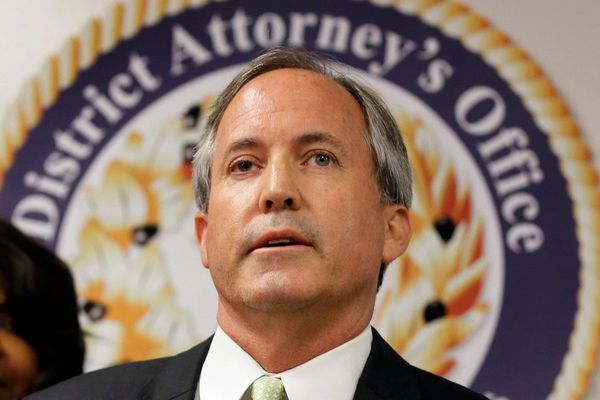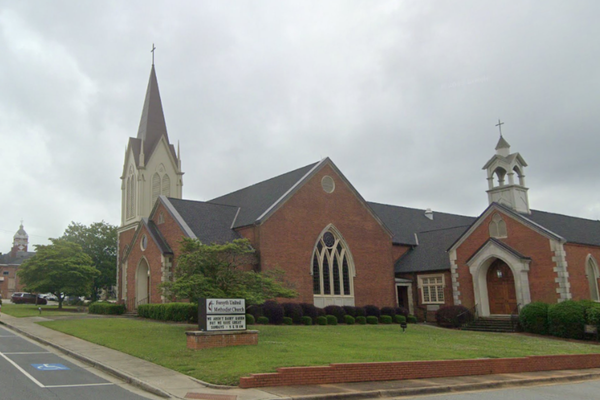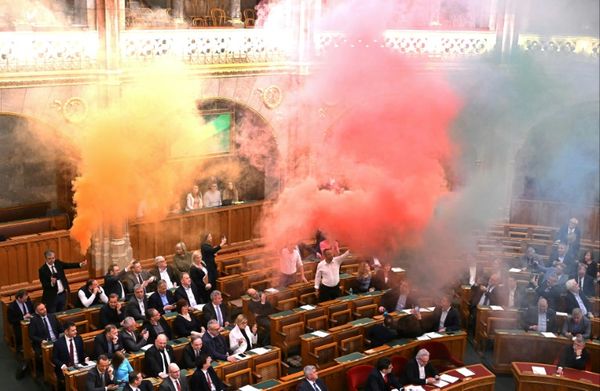/https://static.texastribune.org/media/files/126c80826d9a2d541ad8429548ae89e5/ATX%20Winter%20Storm%20Feb%2016%20MM%20TT%2009.jpg)
Last week’s freeze was the first major test of the changes Austin has made to its cold weather and emergency shelter precautions since the winter storm in February 2021, and it showed that despite improvements in the city’s coordination and planning, weaknesses persist.
Activists and volunteers who work with people experiencing homelessness say the city was better at communicating with them during this storm, but noted that shelters and warming centers were sometimes difficult to reach, lacked accommodations for families with children and weren’t prepared for power outages themselves.
Before the 2021 freeze, known as Winter Storm Uri, Austin had long relied on volunteers at churches and nonprofits to provide warming shelters and didn’t devote city funds to opening temporary shelters when temperatures dipped below freezing. When the storm hit, the city had no emergency plan for providing mass shelter in the case of a major winter storm and widespread power outages. In Travis County, 28 people died during and after Uri, including four who were homeless.
In the aftermath, Austin reevaluated its protocols for setting up temporary cold weather shelters. Those spaces are used mostly for people experiencing homelessness, but in the event of a major disaster, the city is also expected to set up emergency shelters for the wider public.
[A new winter storm and old problems raise questions about Austin leaders’ response to crises]
But progress has been slow. A recent audit evaluating the city’s cold weather shelter plans and operations throughout 2022 found serious deficiencies. Cold weather shelters were often understaffed during the 17 occasions that the city opened them, the audit found, and there were four nights when shelters should have been made available based on how cold it was, but weren’t.
The audit also found that city plans still did not say how shelters should be run in the event of power outages or a prolonged cold snap — two of the defining features of last week’s freeze.
In an effort to fix some of those problems, the city outsourced its cold weather shelters and recently signed a $1.2 million contract with Austin Area Urban League to run them, representing the first time city funding has been allocated to the operation of these temporary spaces. The nonprofit is expected to take full control next winter but has already started running some shelters with the city.
When the cold struck last week, the two entities worked to make sure day and overnight shelters would be available.
Compared to the response in 2021, the plans for setting up and accessing shelters this time around were much clearer.
Anyone seeking overnight shelter was required to register at a single meeting point downtown between 5 and 8 p.m. each night. From there, they would be transported to one of the nine overnight shelters in recreation centers around the city. About 1,900 people used the city’s overnight warming shelters between Jan. 30 and Feb. 3, according to city figures.
Shane Lawson, who has lived on Austin’s streets for about three years, tried to endure the cold from his camp on East Cesar Chavez, but after failing to find an overhang to protect him from the freezing rain, he looked for shelter.
He went to the Terrazas branch library during the day, which provided food and showed movies. At night, he and others were bused to an overnight shelter. It was Lawson’s first time using a warming shelter, and he was grateful for the care. The only downside, he said, was having to leave his belongings unattended outside.
“It got real cold this time,” he said while smoking outside a warming shelter on Thursday. “This storm was different.”
Many people experiencing homelessness also searched for shelter during the 2021 winter storm. Antony Jackson, who founded the advocacy organization We Can Now, drove around picking people up out of the cold that year but said there was little coordination or communication from the city about where they could go.
Things have improved significantly since then, he said. Now, he hears from the city ahead of time about the plans for shelters.
“Two years ago, I just remember when the storm really hit us, we weren't prepared for that,” he said. “Now things feel way more coordinated, way better, safer.”
But despite the clearer planning and coordination, some who provide homeless services said shelters are still too inaccessible for people in different parts of the city.
Considering Austin’s size and how spread out the homeless population has become, it can be a challenge for people to travel to a single meeting point to access overnight shelters, said Mark Hilbelink, director of Sunrise Navigation Center. And if roads are icy and buses stop running, like they did last Wednesday, people have few options to get downtown and may be left stranded.
The city also seemed to be unprepared for widespread power outages again, Hilbelink said.
“Three of the shelters I was at yesterday had no power,” Hilbelink said on Thursday, the morning after about 550 people used the city’s overnight shelters. “You’re going to a warming shelter, and it’s not warm. These are not unforeseen challenges because all of these things happened during Uri.”
The shelters also did not accept families with children, advocates said. Families are less likely to experience unsheltered homelessness, but some who were living out of their cars also needed a place to stay during the storm.
Sasha Rose, an organizer with Austin Mutual Aid, which helps to distribute money, food and other resources among those who need them, said she heard from a number of mothers with children who could not find any space in shelters. The mutual aid group helped pay for about 30 people, including some of these families, to rent hotel rooms instead.
“Austin Mutual Aid was putting people in hotels because they were being turned away from shelter,” Rose said.
In an email last Thursday, a city spokesperson said that “no one has been turned away for not being single men and women and a handful of families were accommodated” on Wednesday night. She said that the city had worked with community partners to find them shelter.
The city did not say who those partners were but appears to have referred some families to other shelter providers in town.
Reeanna Zamfir, a spokesperson for Salvation Army’s Rathgeber Center, which provides shelter for families year-round, said it hosted at least one family that had tried to use the city’s warming shelters but was referred to the Salvation Army instead.
Zamfir said the Rathgeber Center was close to capacity during the storm. Its staff did not coordinate with the city and was unaware of the city’s plans for warming shelters, she said.
As power outages and freezing weather continued to drag on for days, Rose and other service providers urged the city to open a shelter for families with children.
On Monday, seven days after other shelters were first opened and long after the freezing temperatures had subsided, Austin’s Homeland Security and Emergency Management opened an emergency shelter that could accommodate families, a city spokesperson said in an email.
As of Tuesday, the shelter had received calls from families, but none had stayed there, according to the city.
“Realistically, we needed to have that set up beforehand,” Rose said. “People with children need to know exactly what to expect. They need to know ahead of time what the process is going to be like.”
Rose said she felt there was still a lot of work needed to ensure shelters are accessible to everyone who needs them when major storms hit.
“There is improvement in that I feel like there are people who are listening on the city side and advocating for change,” she said. “But I feel like we’re stuck in a rut in that it’s almost two years later, and I do not feel like our city is prepared for these kinds of weather situations.”







